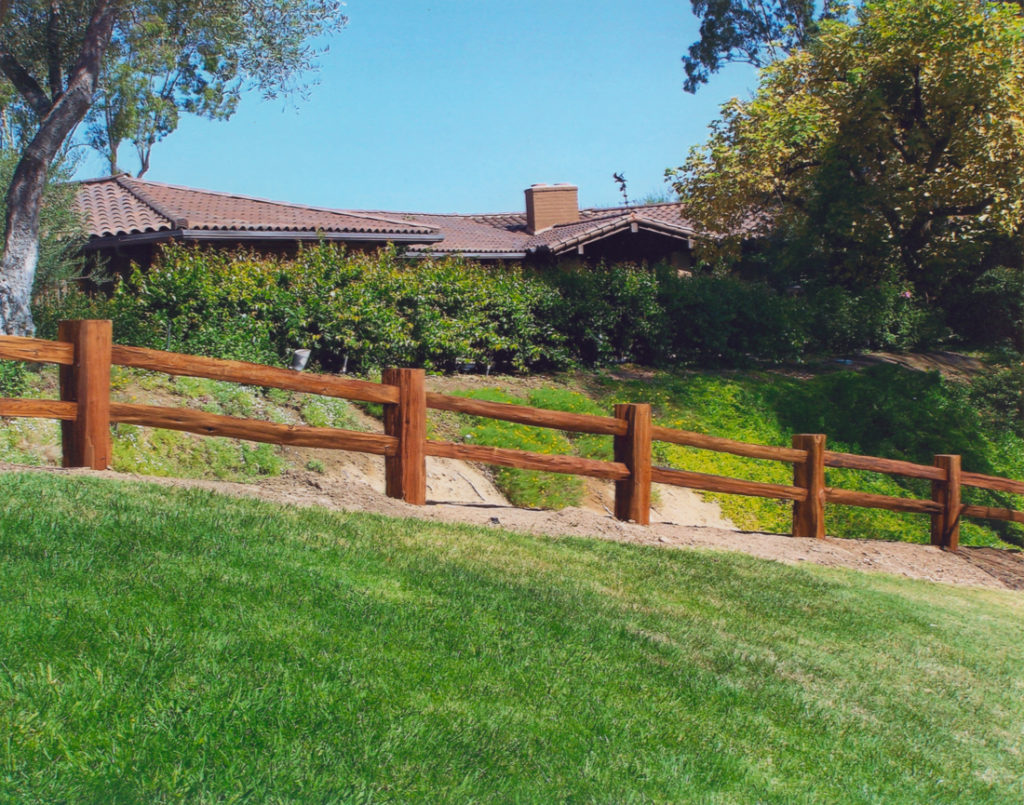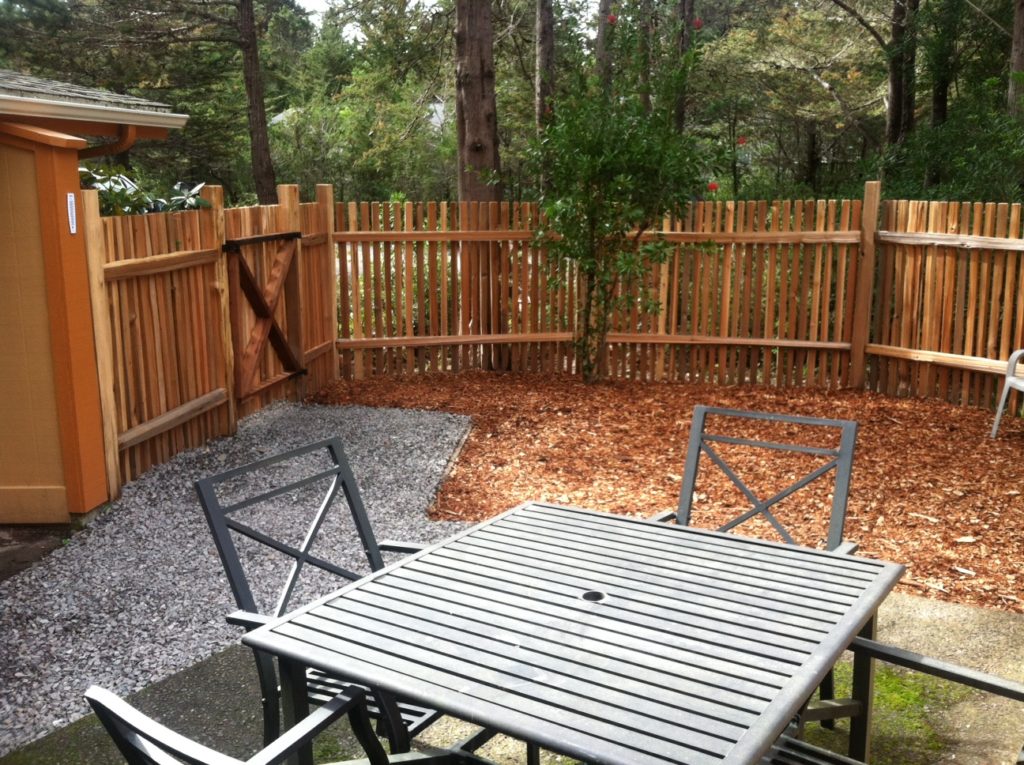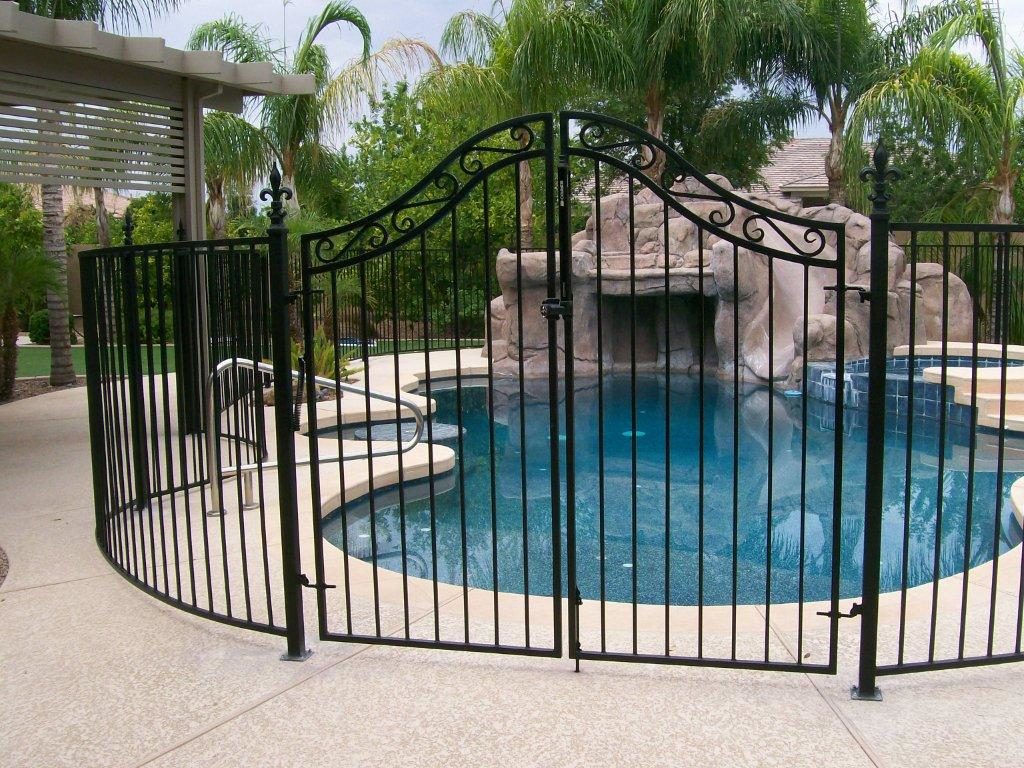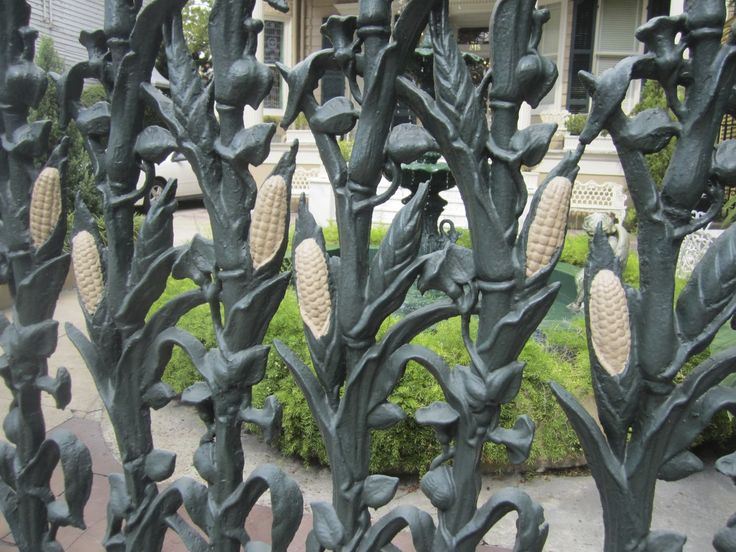Yard fences come in a wide variety of materials and styles that can accent and compliment the look of any home. Fences contribute to safety, security, peace of mind, curb appeal and overall style of your home.
Before delving into various types of privacy fences and their styles, we have to examine local construction ordinances. Let’s briefly address these considerations first, and then get to the top fence types for residential properties as well as their costs and pros and cons.
How to Get Your Building Permit for New Fencing Approved
Before selecting the type of fence that you would like to have erected, there are some steps that ought to be taken as soon as possible. These preliminary steps include the following:
- Contacting neighbors and including them in the process. Ultimately, you’ll be seeking their buy-in, though it helps to be open to feedback, some of which may be resistant to such a change. A desire to work with neighbors can go a long ways. Building a fence ought not to lead to burning bridges.
- Contacting local municipality zoning departments. You’ll want to learn what requirements, if any, they have for the project you have in mind. In this case it is a fence, but the type of fence, and especially the height could lead to requirement of building permit. This in turn may require you to supply a site plan, along with land surveying and inspection before and after work is completed. In many areas, a fence over six feet necessitates a building permit. Yet, other areas have it lower, or over three feet. It is up to you to make the contact with your local government to find out what specific requirements are necessary in your area.
- Having a quality site plan done. Again, this may be a requirement for a building permit. The plan will overview your entire property, providing two dimensional birds eye view of where everything currently on the property is situated, and where the fence line will be installed exactly. For the purposes of satisfying a building permit, the drawing must be to scale, and takes time. Fortunately there are services that can aid in this, to free you up for other work toward the project. Yet, consider having a three dimensional photo realistic render and a site plan, as height is not readily represented on a typical plan. The 3D version can effectively communicate your project plans to any workers, as well as neighbors. Hiring a general contractor will possibly result in them drawing up a site plan to satisfy the building permit.
Note on Building Permits: If you are planning a major fencing installation project, then it’s important to note that in many cases it may be necessary to provide a site plan in order to obtain various home building permits from your city hall or township. You can turn to 24h Plans to get a custom site plan drawing prepared for your dream home in less than 24 hours by our team of experienced architects and drafters. Use the promotion code: 24hplans-20off to get a 20% discount off any package. Use the promotion code: 24hplans-20off to get a 20% discount off any package. — Please note this is a limited time offer, exclusive to the readers of our blog. This offer is not being advertised anywhere else.
Selecting Your Fencing Materials and Finalizing Decisions
Selection of material for your fence is an important decision. When it comes to fence styles, multiple materials may be used to accomplish the same fence. A tall privacy fence, for example, may be made of cedar or vinyl and look virtually the same. It could be metal, and add element of security, but may be out of place for what neighbors think fits in.
The four basic materials are wood, metal, hard plastic and stone. Each of these have further options to select from. Wood is the most popular material. It’s on the lower end of costs, but requires the most ongoing maintenance. Metal is in the midrange to upper end on cost and requires little maintenance. Vinyl is fairly expensive, but also requires little maintenance.
The type of fence you choose could, rather easily, dictate the material you go with. A picket fence conjures up image of wood. And yet, vinyl picket fences exist. For security, a wrought iron fence is the quintessential example. Allow our list below to help with this part of the decision making.
Decisions on accessory items and design are certainly part of the planning stage. These are items to be included on a site plan and ideally presented on a 3D depiction of your fence design. A primary accessory is a fence gate.
Virtually every fence has one, and consideration for gates need to include how wide the entrance is, how high the latch will be, and where will the entry best be situated. If along a walk way, then the decision is obvious.
For width of entry, keep in mind that besides just people entering, a time will come when larger items, like a sofa, need to be moved into or out of your home, and so width considerations need to take that into account.
Other design elements include lattices, end caps, ornamental features, and more. This is getting to the nitty gritty of the fence appearance, but helps take a bland, boring fence project and transforms it into something that you and your neighbors will actually enjoy, and that adds value to your property.
Considerations for design lead to the final decision to be made: who will do the work?
While the DIY approach certainly holds appeal to the budget conscious, it can be very labor intensive to install a fence through an entire property. The design might be sacrificed going the DIY route in lieu of desire to get ‘er done.
Fence Types and their Intended Uses
Fences several different purposes, for instance:
- increasing privacy and reducing neighborhood noise
- security
- enclosure of features on the property
- marking of property lines
In our list, we’ll note which of these purposes are being met, along with basic description of the fence, the cost per linear foot, and pros and cons for each type.
Please note that we are going with the most popular fences in residential areas. There are many more types than what we’ve listed, but we are covering the most common types.
The Picket Fence Purpose and Pros and Cons
- often used for marking property lines
- adds value to the property
- simple design that most neighbors ought to be familiar with
Disadvantages
- offer very little security or added privacy
- if using wood, they require ongoing maintenance
Material and design options / accessories
- typical picket fence has the top be straight across, usually under 6 feet high
- additional design options include the top line being wavy or convex
- usually one color is used throughout the entire fence, but color choices are virtually unlimited
- Cedar is most popular material, but other wood grains are sometimes used
- Vinyl or PVC are a material option – resulting in less maintenance
- latched gates are typical accessory
- designs are either very simple, with posts being typical 2×4 and the pickets being uniform width, along with spacing between them
Picket Fence Costs
- Material cost averages $15 per linear foot for cedar
- Project cost is around $30 per linear foot (includes labor)
- Latched gates are usually $250 to $500
Split Rail Fence Purpose and Pros and Cons
 via Wild West Split Rail Fence Co.
via Wild West Split Rail Fence Co.
- generally used for marking property lines
- often serve purpose of keeping 4-legged animals away
Disadvantages
- offer very little security or added privacy
- if using wood, they require ongoing maintenance
Material and design options / accessories
- typically made from cedar, sometimes yellow pine or composite wood are used
- basic design is posts every 6 to 12 feet, with horizontal rails between each post in continuous pattern along entire fence line
- fence height is usually under six feet
- wood rails may be lined with metal in the open space to increase security
- vinyl and PVC are sometimes used to save on ongoing maintenance costs
- gates are usually very wide, enough to drive a vehicle through
- color is usually simple white or natural wood color
- other design or ornamental features are rare
Split Rail Fence Costs
- Material cost averages $14 per linear foot for cedar
- Project cost is around $25 per linear foot (includes labor)
Privacy Fence Purpose and Pros and Cons
- Privacy and noise reduction
- offer modest security
- may be used for marking property lines
Disadvantages
- requires building permit
- neighbors may not immediately buy in, especially depending on way fence is constructed
- with wood comes ongoing maintenance
Material and design options / accessories
- typically the side with visible construction faces toward the owner’s property, and outward appearance sees only boards and tops of posts
- Cedar privacy fences are very popular fence types for residential markets
- Bamboo is more elegant material option, increasing popularity
- Metal offers added security
- Vinyl and PVC look very similar to painted Cedar, with far less maintenance
- Posts are 6 to 10 feet apart with vertical boards tightly fit together such that no one can see through the fence
- A Wyngate fence is option where boards are alternated on rails, so that it looks the same from either side
- these are considered ‘semi-private’
- Often sold in panels for easier installation. Bamboo is sold in rolled up bundles./li>
- Latched gates are typical accessory
- End caps on posts, along with lattices below the fence or on top are sometimes used
- Additional design options, such as ornamental features, are rare but not unheard of
- Color can be anything, but white, dark brown or natural wood that will fade to silver-gray is typical
Privacy Fence Costs
- Material cost averages $16 per linear foot for cedar
- range depends on whether panels are used or not
- Project cost is around $25 and $35 per linear foot (includes labor)
- Latched gates are usually $150 to $500
- End caps range from $5 to $10 each (for posts)
- Lattice panels: 4 by 8 feet each cost $50 to $200
Chain Link Fence Purpose and Pros and Cons
 via Total Fencing
via Total Fencing
- modest security, good at keeping pets and children from wandering
- can be tweaked for privacy
- may be used for marking property lines
- fairly durable, long lasting
- relatively inexpensive
Disadvantages
- if not well maintained, they can be an eyesore
- neighbors may not immediately buy in, given perception of cheap option
- offers no noise reduction
Material and design options / accessories
- Galvanized steel is primary material option
- Aluminum is available option
- may have mesh or slats covering spaces, to aid in privacy
- while silver-gray is typical color, options exist that coat with color so it blends in well with grass and foliage
- latched gates are typical
- ornamental features are rare, but not unheard of
Chain Link Fence Costs
- Material cost averages $10 per linear foot
- Project cost is around $24 per linear foot (includes labor)
- Latched gates are usually $35 to $300
Aluminum Fence
 via Fence Depot
via Fence Depot
Purpose/pros:
- good security, great at keeping pets and children from wandering
- shorter fences may used to enclose a pool or garden within the property
- may be used for marking property lines
- very durable, long lasting
- relatively inexpensive compared to wrought iron
Disadvantages
- usually offer very little privacy
- prone to bending or getting visible ding marks
Material and design options / accessories
- Aluminum is the material, and more often than not it is black, though other color options are available
- varies in height, usually between 3 and 8 feet
- may make use of stone or brick columns, or use that as base material that aluminum fence sits on top of
- latched or locked gates are typical
- ornamental features are somewhat typical, but add to cost
- about a dozen well known design patterns offer a bit of variation
Aluminum Fence Costs
- Material cost averages $15 to $150 per linear foot, depending on fence height, design pattern
- Add $35 to $50 per hour for labor costs
- Gates are usually $275 to $750
Wrought Iron Fence Purpose and Pros and Cons
- great security, sometimes make it the only way a person or vehicle can enter the property
- shorter fences may used to enclose a pool or garden within the property
- often used for marking property lines
- highly durable, long lasting
Disadvantages
- usually offer very little privacy
- can rust if scratched
Material and design options / accessories
- Iron is actually steel, hopefully galvanized. May even be aluminum, which we already covered.
- usually at least 6 feet high
- may make use of spiked poles for additional security, keep intruders out
- routinely makes use of ornamental features, for added touch of class
- often uses stone or brick columns
- black is most used, but other color options are possible
- gates may be latched, but are often locked for emphasis on security
Aluminum Fence Costs
- Material cost averages $25 and up per linear foot, depending on fence height, design pattern
- Add $35 to $50 per hour for labor costs
- Gates are usually $275 to $750 for yard gates, $1000+ for vehicle gates
Take-home tip: always ask for several quotes before settling for a fencing contractor.
Note: Here’s how we can help: 24hplans has team of highly-trained, professional architects and drafters who can prepare any kind of site plan in the shortest amount of time possible, so that you can easily obtain that building permit and get on with your project. Use the promotion code: 24hplans-20off to get a 20% discount off any package. — Please note this is a limited time offer, exclusive to the readers of our blog. This offer is not being advertised anywhere else.






Leave A Comment